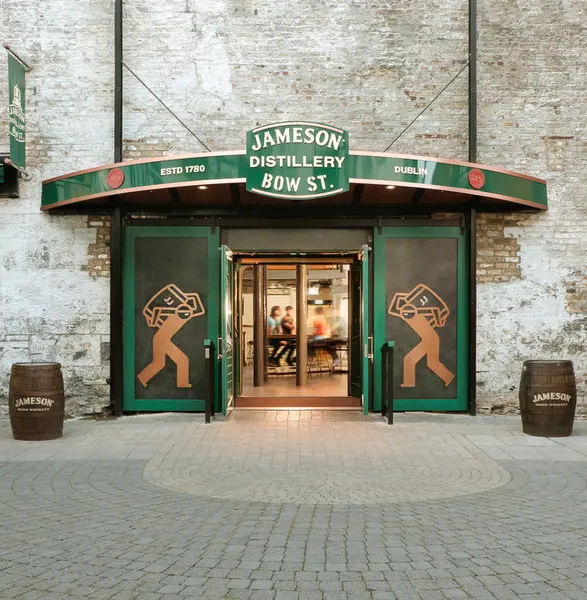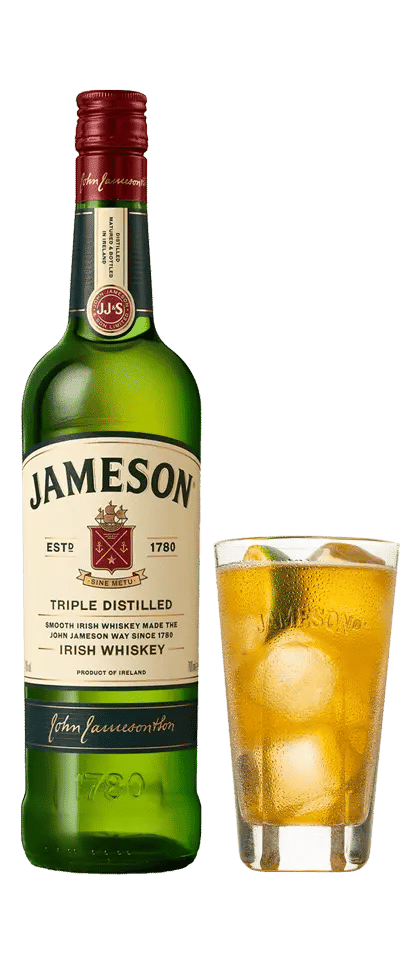
Teasing The Truth From Your Delicious Dram
What Does Whiskey Taste Like? Let’s Take a Tour.
If you’re curious about whiskey and its unique flavour profile need take note. Most first-time whiskey drinkers wonder what whiskey tastes like and whether it’s actually well… good.
While experienced whiskey connoisseurs speak of delightful sweetness and smokiness, others insist on a more bitter and dry experience. So, let’s get to the bottom of the barrel. What exactly does whiskey have in store for us? And how can you get the most from it.
How To Describe Whiskey Taste?
Different types of whiskey produce different flavours. So, let’s get acquainted with a lexicon of common terms used to describe differing tastes and elements of our fair liquid.
• Full Bodied: This refers to a robust and intense flavour. Using this descriptor to refer to how a Whiskey would feel in the mouth as opposed to intensity of flavour say.
• Light Bodied: This term references smoothness, light flavour, and less intensity. And is used to describe the mouth feel of the whiskey.
• Bold: Exactly what it says on the tin.
• Delicate (or Light): For the mild and subtle, meaning you won’t find this whiskey overpowering other tastes.
• Smooth: This suggests a soft, silky, and subtle feel in the mouth and throat. And is a staple of Jameson.
• Sweet: Usually, when we throw in the word “sweet,” we mean hints of caramel, spice, fruit, citrus, vanilla, or honey.
• Spicy: This is when that spice lingers after the first sip.
• Briny: This term describes a salty but subtle flavour. Examples of this are Whiskeys like Jeffersons or Scapa.
• Floral: When a whiskey is referred to as having a “floral” taste, it often means delicate or light with a floral aroma (although also very subtle!).
• Smokey (or Peaty): A smoke-like flavour comes from barley that has been dried using peat where the smoke will reek over the grain as it dries, which varies from brand to brand and whiskey to whiskey.
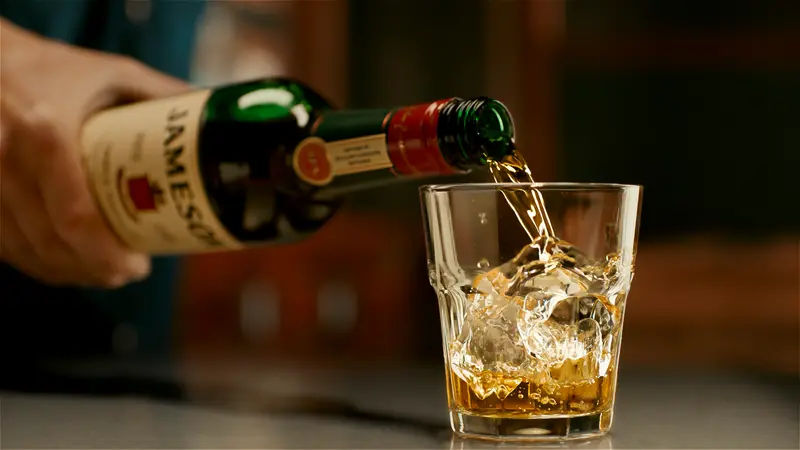

Not all whiskeys are created equal. So, let’s really get into the nitty-gritty bits. Below, see a ready reckoner highlighting the main differences between Irish, Scotch and American Whisk(e)y. Please note – there are many exceptions to the below rules.
Taste Differences Between Whiskeys
| VARIENT | Irish Whiskey | Scotch | Bourbon/American Whiskey |
| COUNTRY OF ORIGIN | Ireland | Scotland | USA |
| GRAIN | Malted and Unmalted Barley and Maize | Malted Barley, Maize and Wheat | Corn (maise), Barley and Rye |
| NUMBER OF DISTILLATIONS | 3 | 2 | 1 to 2 |
| STYLE OF WHISKEY PRODUCTION | Single Pot Still Whiskey, Malt Whiskey and Grain Whiskey | Malt Whiskey and Grain Whiskey | Mixed Cereal / Grain Whiskey |
| STILLS USED | Pot Still & Column Still | Pot Still & Column Still | Column Still & Pot Still |
| MATURATION
|
3 Years Minimum | 3 Years Minimum | 2 Years Minimum |
| OAK BARRELS | Seasoned Bourbon, Sherry & Port | Seasoned Bourbon, Sherry & Port | New charred American Oak Barrels |
| AROMA | Floral / Fruity / Vanilla | Smoky / Peaty / Fruity | Sharp Sweet / Wood / Vanilla |
| TASTE | Roundness, Creamy, Fruity / Spice | Smoky / Dry / Fruity | Sharp / Wood / Bitter / Vanilla |
Scotch vs Irish Whiskey Taste
The main difference between each countries whiskey is that they are exclusively made in that country. Genius, we know. Irish in Ireland, Scotch in Scotland. Each is like an accent and they reflect the country side around the distillery and the people who work there.
A scotch is a whisky exclusively made in Scotland. Where the country’s unique climate and natural resources play a significant role in shaping its character. And although its production process is highly regarded, Scotch whisky usually only distills its spirit twice, unlike Irish whiskey, which as you’ve learned, traditionally distills three times. Creating a key difference in flavor, giving Scotch a more complex, rich and full-bodied flavor with notes of caramel, vanilla, and oak. And holding hints of fruit, and smoke, but only when the barley is peated.
Bourbon vs Irish Whiskey Taste
Bourbon is an American whiskey that is made primarily from corn and aged in new charred oak barrels. Produced in the United States but not necessarily Kentucky as some think. Where the mash bill (the mixture of grains used to make the whiskey) must contain at least 51% corn. With no additives allowed. And can be distilled just once to qualify as bourbon. A very different choice to Irish. To discover more differences between the two, check out Whiskey V Bourbon.
There are two main types. Straight bourbon, which is aged in new, charred oak barrels for at least two years, and cannot contain any added flavors or colors. And small batch bourbon, which is made by blending together a small number of barrels to create a unique flavor profile.
In terms of flavor, bourbon is known for its sweet and rich taste, with notes of caramel, vanilla and oak. With the use of new American Oak Barrels adding sweetness that sets it apart. Giving it that sugary American feel. What a surprise.
Japanese Whiskey vs Irish Whiskey Taste
Japanese whiskey is much lighter and more delicate compared to Irish Whiskey. Sometimes spicy with exotic fruit, vanilla, or honey hints. It’s drier and dare we say less smooth than Irish. In our opinion anyway, queue some heat from our Japanese family and fans.
American Whiskey vs Irish Whiskey Taste
American whiskey is an umbrella term used to describe all the different styles of whiskey distillers and matured in the United states. Whiskey styles include bourbon, Tennasee (well, it’s sort of a style), rye, and malt. Although American Malt Whiskey is not yet defined in US Law wither, but we’re trying to paint a full picture here. Inevitably, you’ll get a higher variety of flavour with American whiskey tastes as there are more varying styles. They are often bolder, spicier and sharper than the traditional Irish taste. Sounds about right to us.
Factors That Affect Its Taste
Creating good-tasting whiskey is an art. Jameson Whiskey’s story dates all the way back to 1780 when John Jameson proudly established our unique way of formulating the smoothest whiskey around. Considering it’s been enjoyed for over two centuries, there’s got to be something special to it.
From the type of grain used for distillation to the aging and distilling process, there’s a lot that goes into making a world-renowned whiskey that is hard to compare.
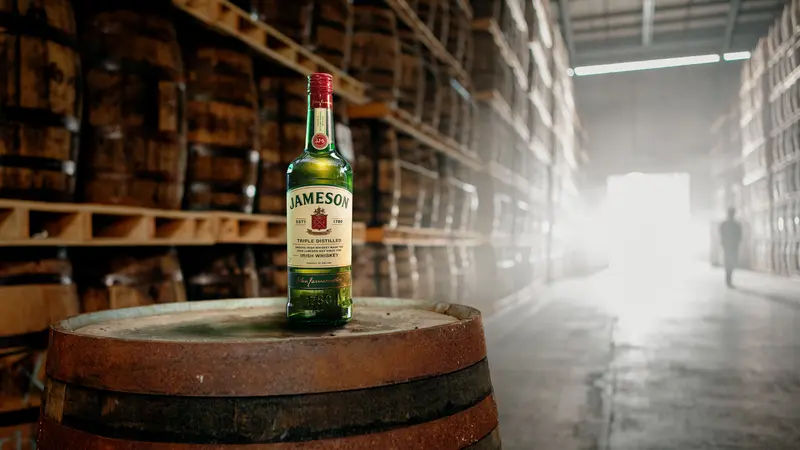
The Type of Grain Used for Distillation
Jameson is a marriage of both pot still and Grain whiskey.
The Pot Still whiskey in Jameson uses both malted and unmalted barley go into creating Jameson Irish Whiskey. Locally grown, we refuse to cut corners.
The grain whiskey in Jameson uses mainly corn and a little pinch of malted barley to create a delicate, light and floral spirit that is aged in ex bourbon barrels which ad sweeteness and subtle spice’s. Bringing the best of all worlds together. How Jameson.
Ageing Process
In Ireland, the law states that any whiskey must be aged for a minimum of three years. Like we said, we don’t cut corners. Thus, we give our whiskey at least three years to mature and truly bring out that good ol’ Irish flavour we all know and love. But many a time, it’s a many years more. Now we sound Italian…
Distilling Process
All of Jameson’s whiskey comes from a single distillery so we can ensure quality is up to our high standards 24-7. Our signature smoothness comes from our triple distillation process—something that was started from the very beginning and we won’t stray from it. Ever.
Whiskey-Tasting Glasses
It’s half the flavour. Ok that’s completely untrue. But to become the pro whiskey sipper we know you are and raise a glass like we know you can, you need a premium whiskey-tasting set. To complete the image OF course. With Jameson’s Whiskey Glasses, you get everything you need to enjoy your traditional Irish whiskey with your circle of friends to the fullest.Check out our blog for more on the different types of whiskey glasses.
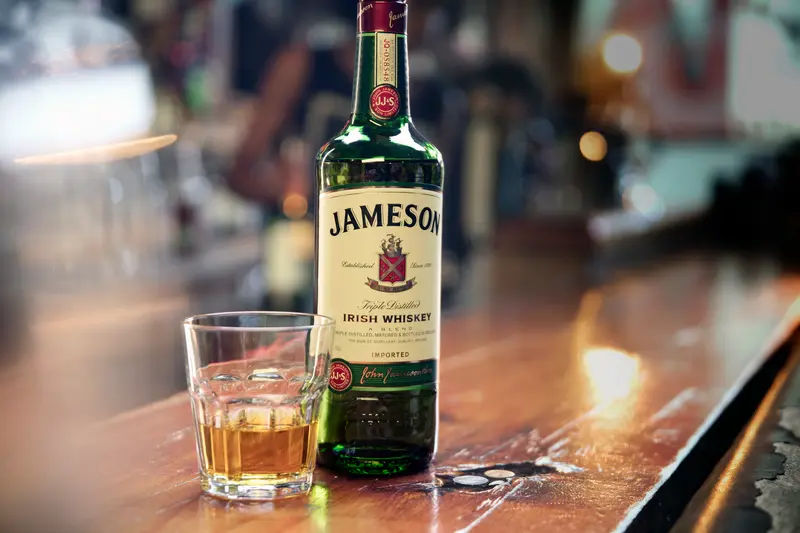
More on Whiskey’s Taste
Still got questions? We’ve got answers. Check out more below regarding the taste of whiskey and what you should know before you get started with your next whiskey tasting.

Does whiskey taste good?
Absolutely! Learning to drink whiskey like a pro can enhance your experience (and the flavour), giving you a true taste of this one-of-a-kind Irish drink.
How to make whiskey taste better?
If you’re new to whiskey drinking, we encourage you to go bold the first time around and try whiskey on the rocks or keep it simple and enjoy it at room temperature. Appreciating whiskey sometimes comes down to understanding it (like reading this article!). Sip slowly. Notice the subtle hints of flavours. This isn’t a drink that’s meant to be chugged back; it’s meant to be savoured, shared, and enjoyed. The more times you try it, responsibly of course, the more you’ll begin to understand. It takes time for your pallete to mature, just like it does for our whiskey too.
What to mix with whiskey to make it taste better?
Alright, so what if you do want to mix your whiskey? Well, we’ve got a few options for you. Whiskey works well with ginger ale, ginger beer, coffee (Yes, a good ol’ Irish coffee might be just what you need to start a holiday or weekend off right!), champagne, vermouth, tomato juice (Don’t bash it until you try it), and lemonade. And good friends too obviously. Or a new one.
Whiskey Tasting Experience
For the authentic and true Irish whiskey-tasting experience, we encourage you to stop on by our Bow Street distillery. Learn about the whiskey-making process first-hand. And while you’re at it, go ahead and enjoy some of our Jameson Irish Whiskey (or take some home for the clan).
See it as your home away from home. Our home. And yours too. For whenever you need us.
Sláinte.
